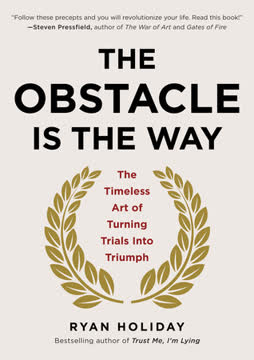Key Takeaways
1. Prices coordinate knowledge and resources without central planning
Prices are the pheromones of the human ant colony we call an economy, the signals that hold the whole thing together, the tendons of the invisible hand.
The price system is ingenious. It allows for the coordination of vast amounts of dispersed knowledge and resources without any central planner. When demand for a product increases, its price rises, signaling producers to make more and consumers to use less. This process efficiently allocates resources to their most valued uses.
Prices convey critical information:
- Relative scarcity of goods
- Consumer preferences
- Production costs
- Opportunities for profit
The "invisible hand" emerges from individual actions. Though each person acts in their own self-interest, the price system channels these actions to benefit society broadly. This "spontaneous order" allows for complex economic coordination without top-down control.
2. Innovation and entrepreneurship drive economic growth and prosperity
The profits drove David Kornfeld to create that human delight and joy and gratitude. Not his good intentions. Not his introspection, sitting around thinking what he might be able to do to make the world a better place.
Entrepreneurs are problem-solvers. They identify unmet needs in society and develop new products, services, or processes to address them. This innovation is driven by the potential for profit, which acts as a powerful incentive to take risks and invest time and resources.
The impact of innovation is far-reaching:
- Improved products and services
- increased productivity
- New industries and job opportunities
- Higher standards of living
Innovation is a continuous process. As new solutions emerge, they often create new challenges or opportunities, spurring further innovation. This cycle of creative destruction is a key driver of long-term economic growth and societal progress.
3. Freedom and competition foster creativity and problem-solving
We dream and they don't. We imagine. We look to the future in a way that lets us plan. We save. We invest. We forego pleasure today for something greater tomorrow and we understand why we're doing it.
Human ingenuity thrives in free societies. When people have the liberty to pursue their own interests and ideas, it leads to a diverse array of approaches to solving problems. Competition in the marketplace ensures that the best solutions rise to the top.
Key elements of a free economy:
- Property rights
- Rule of law
- Voluntary exchange
- Low barriers to entry
Freedom allows for trial and error. Not every innovation or business venture succeeds, but the freedom to experiment and potentially fail is crucial for progress. Societies that punish failure or overly restrict economic activity stifle creativity and growth.
4. Economic progress benefits society broadly, not just the wealthy
Look at what happened in the last half of the twentieth century when more women wanted to start working. Did they take chairs that used to belong to others? No. They brought their own chairs with them.
Rising productivity creates new opportunities. As efficiency increases in one sector, it frees up resources and labor for new industries and services. This process expands the overall economic pie rather than simply redistributing fixed resources.
Historical evidence of broad-based progress:
- Increased life expectancy
- Higher literacy rates
- Greater access to education
- Improved living standards across income levels
Technology and innovation benefit consumers. While innovators may reap large profits initially, competition eventually drives prices down, making new products and services widely accessible. This process has dramatically improved quality of life for people at all income levels over time.
5. Understanding economics helps navigate complex social issues
Economics is about how to get the most out of life.
Economic thinking provides valuable tools. Understanding concepts like trade-offs, incentives, and unintended consequences can lead to more effective solutions to social problems. It helps policymakers and citizens make more informed decisions.
Key economic concepts for social issues:
- Opportunity cost
- Marginal analysis
- Comparative advantage
- Externalities
Economics reveals hidden connections. Many social issues have economic roots or implications that may not be immediately obvious. Economic analysis can uncover these relationships and suggest novel approaches to addressing complex challenges.
6. Personal dreams and societal progress are intertwined
Who is the weaver of dreams? Who makes sure that all the dreams can coexist peacefully? Who weaves together all the plans to make sure that they work in parallel rather than producing conflict?
Individual aspirations drive collective advancement. When people pursue their personal goals and dreams, it often leads to innovations and improvements that benefit society as a whole. The market system helps coordinate these diverse ambitions.
Examples of personal dreams with societal impact:
- Entrepreneurs creating new products
- Scientists pursuing medical breakthroughs
- Artists inspiring cultural change
- Educators shaping future generations
The "tapestry of dreams" is self-organizing. There is no central planner coordinating all human activity, yet through the price system and voluntary exchange, billions of individual plans are woven together into a coherent whole.
7. Education and opportunity can transform lives and nations
You honor your parents by what you become.
Knowledge is a powerful catalyst. Education equips individuals with the skills and understanding to pursue their ambitions and contribute to society. It can break cycles of poverty and open doors to new opportunities.
Transformative power of education:
- Increased earning potential
- Greater social mobility
- Improved problem-solving skills
- Enhanced civic participation
Nations benefit from an educated populace. Countries that invest in education and create opportunities for their citizens tend to experience greater economic growth, innovation, and social progress. This can lead to positive change even in challenging circumstances, as illustrated by Ramon's potential impact on Cuba's future.
Last updated:
FAQ
What is "The Price of Everything" by Russell Roberts about?
- Economic Parable: The book is a parable that explores how prices, markets, and spontaneous order shape prosperity and possibility in society.
- Story-Driven Approach: It follows the intertwined stories of Ramon Fernandez, a star athlete and Cuban immigrant, and Ruth Lieber, a wise economics professor, set against the backdrop of Stanford University.
- Core Economic Concepts: Through narrative, it explains fundamental economic ideas such as emergent order, the role of prices, specialization, and the distribution of knowledge.
- Real-World Relevance: The book uses relatable events—like a protest against a corporation and the aftermath of a natural disaster—to illustrate how economic principles play out in everyday life.
Why should I read "The Price of Everything" by Russell Roberts?
- Accessible Economics: The book makes complex economic concepts understandable through engaging storytelling rather than dry theory.
- Practical Insights: It offers a fresh perspective on how markets work, why prices matter, and how prosperity is created and distributed.
- Thought-Provoking Questions: Readers are challenged to reconsider common assumptions about fairness, justice, and the role of government in the economy.
- Broad Appeal: Whether you’re a student, a professional, or simply curious about economics, the book provides valuable lessons applicable to real-world issues.
What are the key takeaways from "The Price of Everything" by Russell Roberts?
- Prices as Signals: Prices coordinate the actions of millions without central direction, using dispersed knowledge to allocate resources efficiently.
- Emergent Order: Order and harmony in markets arise spontaneously from individual actions, not from top-down planning.
- Specialization and Knowledge: No one person knows how to make even a simple pencil; specialization and trade allow society to achieve the impossible.
- Limits of Regulation: Attempts to control prices or markets often lead to unintended consequences, such as shortages or inefficiency.
- Prosperity and Progress: Economic growth and rising living standards are driven by innovation, competition, and the freedom to pursue dreams.
How does "The Price of Everything" by Russell Roberts explain the concept of emergent order?
- Spontaneous Organization: The book uses examples like ant colonies, flocks of birds, and the making of a pencil to show how complex order can arise without a central planner.
- Market Analogy: Markets are compared to these natural systems, where individual actions, guided by prices, create coordinated outcomes.
- No Central Authority: There is no “pencil czar” or “market czar”—order emerges from countless decentralized decisions.
- Everyday Examples: The narrative highlights how things like traffic patterns, language evolution, and product availability are emergent phenomena.
What role do prices play in "The Price of Everything" by Russell Roberts?
- Information Transmission: Prices convey information about scarcity, demand, and value, allowing buyers and sellers to make informed decisions.
- Resource Allocation: They steer resources to where they are most valued, ensuring that goods and services are produced and consumed efficiently.
- Incentive Mechanism: Prices motivate innovation, risk-taking, and the search for better ways to meet human needs.
- Social Coordination: By adjusting to changes in supply and demand, prices help society adapt to shocks and new opportunities without chaos.
How does "The Price of Everything" by Russell Roberts address the fairness of markets and prices?
- Perceived Injustice: The book acknowledges that market outcomes can seem unfair, especially when prices rise during emergencies or when some people are left out.
- Knowledge Problem: It argues that no one has enough information to allocate resources more fairly than the market does through prices.
- Trade-Offs: Attempts to enforce fairness, such as price controls, often lead to shortages and unintended harm to those they aim to help.
- Compassion and Community: The narrative suggests that while markets are not perfect, they can be complemented by personal acts of kindness and community support.
What is the significance of the "pencil story" in "The Price of Everything" by Russell Roberts?
- Illustrates Specialization: The story demonstrates that no single person knows how to make a pencil; it requires the cooperation of thousands worldwide.
- Dispersed Knowledge: It highlights how knowledge is spread across many people, each specializing in a small part of the process.
- Market Coordination: The pencil’s existence is made possible by the price system, which coordinates these dispersed efforts without central direction.
- Everyday Miracles: The pencil becomes a symbol of the “silent music” of the market, showing the hidden complexity behind ordinary goods.
How does "The Price of Everything" by Russell Roberts compare market order to natural systems?
- Ant Colonies and Bird Flocks: The book draws parallels between the self-organization of animal groups and the spontaneous order of markets.
- No Central Planner: Just as no ant or bird is in charge, no one person directs the market; order emerges from simple rules and local interactions.
- Feedback Mechanisms: Both systems rely on feedback—pheromones in ants, prices in markets—to adapt and respond to change.
- Limits of Human Design: The narrative suggests that human attempts to improve on these systems often fail due to complexity and lack of information.
What does "The Price of Everything" by Russell Roberts say about innovation and economic growth?
- Incentives for Innovation: The book explains that profits and prices create incentives for entrepreneurs to discover better ways of doing things.
- Diffusion of Benefits: While innovators may profit initially, competition ensures that most benefits of innovation are passed on to consumers through lower prices and better products.
- Historical Perspective: It provides examples of how living standards have improved dramatically over the past century due to innovation and productivity gains.
- Role of Freedom: Economic growth flourishes in societies that allow freedom to innovate, compete, and take risks.
How does "The Price of Everything" by Russell Roberts address the impact of markets on inequality and poverty?
- Rising Living Standards: The book argues that the poor today are far better off than in the past, with access to goods and services once reserved for the wealthy.
- Relative vs. Absolute Poverty: It emphasizes the importance of focusing on improving the absolute well-being of the poor, not just reducing inequality.
- Mobility and Opportunity: The narrative highlights the opportunities for advancement in open, competitive economies.
- Policy Implications: It cautions against policies that may reduce inequality but also stifle growth and opportunity for the least well-off.
What are the best quotes from "The Price of Everything" by Russell Roberts and what do they mean?
- “No one can make a pencil.” – Emphasizes the complexity of even simple products and the power of specialization and market coordination.
- “Prices are the pheromones of the human ant colony we call an economy.” – Illustrates how prices guide human behavior in markets, similar to how pheromones guide ants.
- “The curious task of economics is to demonstrate to men how little they really know about what they imagine they can design.” – A Hayek quote, underscoring the limits of human knowledge in managing complex systems.
- “Economics is about how to get the most out of life.” – Reminds readers that economics is not just about money, but about making choices to improve well-being.
What practical advice or methods does "The Price of Everything" by Russell Roberts offer for understanding economics and making better decisions?
- Pay Attention to Trade-Offs: Always consider the costs and benefits, both seen and unseen, when making choices.
- Appreciate Emergent Order: Recognize that many social and economic outcomes are the result of decentralized, spontaneous processes rather than top-down design.
- Be Skeptical of Quick Fixes: Understand that interventions in markets often have unintended consequences due to complexity and dispersed knowledge.
- Value Freedom and Innovation: Support policies and institutions that encourage experimentation, competition, and the free flow of information.
- Seek Deeper Understanding: Use everyday examples—like pencils, traffic, or language—to explore and appreciate the hidden order in the world around you.
Review Summary
The Price of Everything receives mixed reviews, with many praising its accessible approach to teaching economic principles through a fictional narrative. Readers appreciate Roberts' explanations of concepts like pricing, markets, and emergent order. Some find the story engaging and thought-provoking, while others criticize it as didactic and lacking in character development. Critics note the book's libertarian leanings and simplistic arguments. Overall, it's recommended for those interested in learning basic economics, though some find the fictional format less effective than a straightforward essay.
Similar Books










Download PDF
Download EPUB
.epub digital book format is ideal for reading ebooks on phones, tablets, and e-readers.




